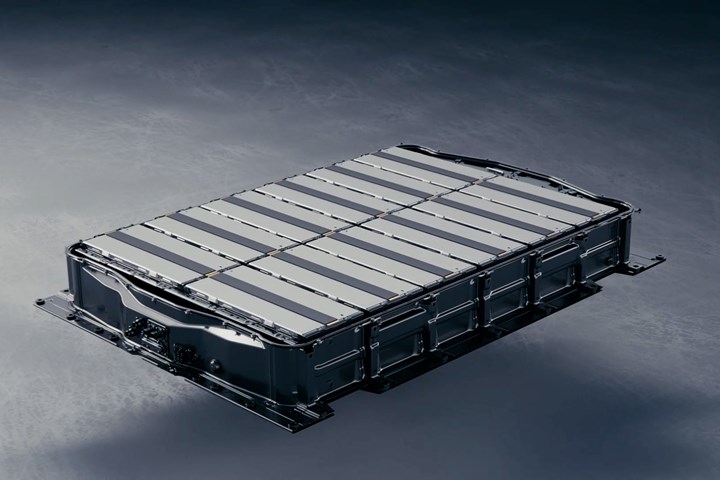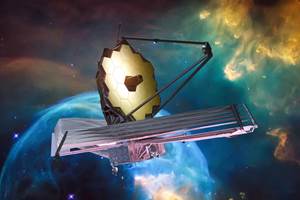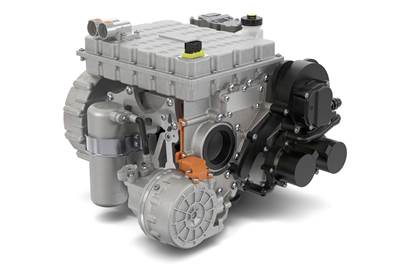How is an EV Battery Made?
Everyone talks about batteries, but how are they produced? Here’s the long and short (circuit) of it.
The Ultium battery for the GMC HUMMER. Earlier this year Ultium Cells—a joint venture between LG Energy Solution and General Motors—announced a $2.6-billion investment in a battery plant in Lansing, Michigan. This is the third massive plant it is building. The others are in Ohio and Tennessee. Photo Credit: Ultium
One of the biggest differences between a vehicle with an internal combustion engine (ICE) and an electric vehicle (EV) is the battery that’s used to store energy for the EV. While the 12-V lead-acid battery in an ICE vehicle starts the vehicle, the 400-V (likely) lithium-ion battery in an EV keeps it going.
Three Steps
Battery production—nowadays performed in a “Gigafactory,” which simply means “big battery plant”—has three primary steps, primarily automated:
- Electrode manufacture
- Cell assembly
- Conditioning
As for the first, there are typically two production lines, one for the anode and the other the cathode. There is a slurry prepared that is coated on both sides of a foil. This is followed by drying in an oven, then calendaring, as the coated foil is run through two heated rollers. Then the foil goes through a slitting operation. The result is several coated coils.
Then cell assembly, which involves cutting the electrodes and putting them in their containers: pouch, prismatic or cylindrical cans. Coils are cut (mechanical or laser) into individual sheets. The sheets are stacked—anode/separator/cathode. There are electrode tabs that are exposed; they are welded to the main terminals. The cell is placed into its container, which is filled with electrolyte, then sealed.
Finally, the assembled cell undergoes charging and testing.
The cells are then assembled into modules, then the modules into a pack. And the pack into the vehicle.
There’s Experience & Equipment
Edurne Arteta, is an associate engineer in the Cell Prototyping research group of the Electrochemical Energy Storage area of CIC energiGUNE, a private non-profit foundation center established by the Basque Government in 2011. The specialization in batteries makes it one of the top reference centers in Europe. Arteta’s experience encompasses things from designing production lines for batteries to assisting automotive OEMs in EV strategies.
So we asked her to provide some insights into EV batteries.
For example, those steps to creating a cell: Any different for other products?
Arteta: “The defined operations represent the process for Li-ion battery manufacturing, which can be found in all sorts of applications. From small cell phones to larger batteries used in EVs or energy storage devices.”
So presumably there is equipment available, right?
“By now, there are many equipment suppliers specialized in battery production machinery. There are suppliers providing fully automated cell assembly lines and electrode manufacturing lines that are adapted to the client’s cell design. Probably, formation, aging and test system setup [i.e., the third step] has the most custom-made equipment.”
In terms of producing cells, what are OEMs looking for?
“For the automotive industry, the is key to get high energy densities in compact cells, hence the latest variations in format and size depending on the car manufacturer.”
Lots of Demand
CIC energiGUNE projects there will be from 35 to 40 gigafactories in Europe by 2030 to meet the automotive demand of an anticipated 1,000 GWh per year.
In the U.S.? There is some catching up to do (in large part because EV demand in Europe is approximately double that of the U.S. at present).
The “National Blueprint for Lithium Ion Batteries: 2021-2030” prepared by the U.S. Federal Consortium for Advanced Batteries, notes that in 2020 the U.S. had battery production capacity for EVs of 59 GWh (only 8% of the global 747 GWh). While the Consortium projects that there would be U.S. capacity of 224 GWh by 2025, it points out: “demand from U.S. annual sales of passenger EVs alone is projected to surpass this anticipated 224 GWh lithium-ion cell manufacturing capability in 2025.”
There’s a lot of work to be done.
Related Content
NASA Brings Technology to New Heights
Meet NASA mission system engineer Mike Menzel and learn more about the James Webb Space Telescope at Mitsui Seiki USA’s booth (338700) in the South Hall from 11:00 a.m. to 11:45 a.m. on Thursday, September 15.
Read MoreBuilding an Automation Solution From the Ground Up
IMTS 2022 provides visitors the opportunity to meet with product experts to design automation solutions from scratch.
Read More2022 Top Shops Honorees Announced
Modern Machine Shop recognizes excellence in manufacturing with annual Tops Shops awards.
Read More5 Tips for Getting the Most From the Historic Return of North America’s Biggest Manufacturing Event
Plan. Explore. Think of the future. And oh yeah, the shoes. Here is how to get the most from the major manufacturing event that none of us have experienced in four years, and that many will be experiencing for the first time.
Read MoreRead Next
Electric Vehicles Spark Bright Ideas
Ford alone expects to have production capacity for 600,000 electric vehicles by late 2023, and more than 2 million by the end of 2026. The effects on manufacturing are BIG.
Read More3 Mistakes That Cause CNC Programs to Fail
Despite enhancements to manufacturing technology, there are still issues today that can cause programs to fail. These failures can cause lost time, scrapped parts, damaged machines and even injured operators.
Read MoreThe Cut Scene: The Finer Details of Large-Format Machining
Small details and features can have an outsized impact on large parts, such as Barbco’s collapsible utility drill head.
Read More.png;maxWidth=970;quality=90)
.jpg;width=70;height=70;mode=crop)








.png;maxWidth=300;quality=90)







